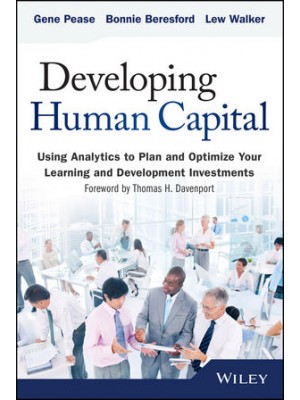Acknowledgments xvii
Introduction 1
1. e-Learning: Promise and Pitfalls 7
Chapter Summary 7
What Is e-Learning? 8
Is e-Learning Better? 11
Th e Promises of e ]Learning 14
Th e Pitfalls of e ]Learning 18
Inform and Perform e ]Learning Goals 19
e -Learning Architectures 20
What Is Effective e-Courseware? 22
Learning in e-Learning 24
2. How Do People Learn from e-Courses? 29
Chapter Summary 29
How Do People Learn? 31
Managing Limited Cognitive Resources During Learning 36
How e-Lessons Affect Human Learning 39
What We Don’t Know About Learning 44
3 Evidence -Based Practice 49
Chapter Summary 49
What Is Evidence-Based Practice? 50
Three Approaches to Research on Instructional Effectiveness 51
What to Look for in Experimental Comparisons 55
How to Interpret Research Statistics 57
How Can You Identify Relevant Research? 59
Boundary Conditions in Experimental Comparisons 60
Practical Versus Theoretical Research 61
What We Don’t Know About Evidence-Based Practice 62
4 Applying the Multimedia Principle: Use Words and Graphics Rather Than Words Alone 67
Chapter Summary 67
Do Visuals Make a Difference? 69
Multimedia Principle: Include Both Words and Graphics 70
Some Ways to Use Graphics to Promote Learning 74
Psychological Reasons for the Multimedia Principle 76
Evidence for Using Words and Pictures 77
The Multimedia Principle Works Best for Novices 80
Should You Change Static Illustrations into Animations? 81
What We Don’t Know About Visuals 84
5 Applying the Contiguity Principle: Align Words to Corresponding Graphics 89
Chapter Summary 89
Principle 1: Place Printed Words Near Corresponding Graphics 91
Violations of Contiguity Principle 1 94
Psychological Reasons for Contiguity Principle 1 99
Evidence for Contiguity Principle 1 100
Principle 2: Synchronize Spoken Words with Corresponding Graphics 104
Violations of Contiguity Principle 2 105
Psychological Reasons for Contiguity Principle 2 107
Evidence for Contiguity Principle 2 107
What We Don’t Know About Contiguity 108
6 Applying the Modality Principle: Present Words as Audio Narration Rather Than On-Screen Text 113
Chapter Summary 113
Modality Principle: Present Words as Speech Rather Than On-Screen Text 115
Limitations to the Modality Principle 117
Psychological Reasons for the Modality Principle 119
Evidence for Using Spoken Rather Than Printed Text 121
When the Modality Principle Applies 126
What We Don’t Know About Modality 127
7 Applying the Redundancy Principle: Explain Visuals with Words in Audio or Text But Not Both 131
Chapter Summary 131
Principle 1: Do Not Add On -Screen Text to Narrated Graphics 133
Psychological Reasons for the Redundancy Principle 135
Evidence for Omitting Redundant On ]Screen Text 137
Principle 2: Consider Adding On -Screen Text to Narration in Special Situations 139
Psychological Reasons for Exceptions to the Redundancy Principle 140
Evidence for Including Redundant On-Screen Text 142
What We Don’t Know About Redundancy 144
8 Applying the Coherence Principle: Adding Extra Material Can Hurt Learning 151
Chapter Summary 151
Principle 1: Avoid e -Lessons with Extraneous Words 153
Psychological Reasons to Avoid Extraneous Words in e-Learning 155
Evidence for Omitting Extraneous Words Added for Interest 156
Evidence for Omitting Extraneous Words Added to Expand on Key Ideas 158
Evidence for Omitting Extraneous Words Added for Technical Depth 159
Principle 2: Avoid e ]Lessons with Extraneous Graphics 159
Psychological Reasons to Avoid Extraneous Graphics in e -Learning 161
Evidence for Omitting Extraneous Graphics Added for Interest 162
Evidence for Using Simpler Visuals 165
Can Interesting Graphics Ever Be Helpful? 167
Principle 3: Avoid e -Lessons with Extraneous Audio 168
Psychological Reasons to Avoid Extraneous Audio in e-Learning 170
Evidence for Omitting Extraneous Audio 170
What We Don’t Know About Coherence 172
9 Applying the Personalization and Embodiment Principles: Use Conversational Style, Polite Wording, Human Voice, and Virtual Coaches 179
Chapter Summary 179
Personalization Principle: Use Conversational Rather Than Formal Style, Polite Wording Rather Than Direct Wording, and Human Voice Rather Than Machine Voice 182
Psychological Reasons for the Personalization Principle 183
Promote Personalization Through Conversational Style 185
Promote Personalization Through Polite Speech 187
Promote Personalization Through Voice Quality 189
Embodiment Principle: Use Effective On -Screen Coaches to Promote Learning 189
What We Don’t Know About Personalization and Embodiment 197
10 Applying the Segmenting and Pretraining Principles: Managing Complexity by Breaking a Lesson into Parts 201
Chapter Summary 201
Segmenting Principle: Break a Continuous Lesson into Bite-Size Segments 203
Psychological Reasons for the Segmenting Principle 206
Evidence for Breaking a Continuous Lesson into Bite -Size Segments 207
Pretraining Principle: Ensure That Learners Know the Names and Characteristics of Key Concepts 209
Psychological Reasons for the Pretraining Principle 210
Evidence for Providing Pretraining in Key Concepts 212
What We Don’t Know About Segmenting and Pretraining 214
11 Engagement in e ]Learning 219
Chapter Summary 219
What Is Engagement? 221
When Behavioral Engagement Impedes Learning 224
Engagement That Leads to Generative Processing 226
A New View of Engagement 233
What We Don’t Know About Engagement 233
12 Leveraging Examples in e -Learning 239
Chapter Summary 239
What Are Worked Examples? 240
The Psychology of Worked Examples 243
Evidence for the Benefits of Worked Examples 243
Principles to Optimize Benefits of Worked Examples 245
Principle 1: Provide Worked Examples in Lieu of Problem Assignments When the Essential Load of the Lesson Is High 246
Principle 2: Fade from Worked Examples to Problems 247
Principle 3: Promote Self-Explanations 249
Principle 4: Include Instructional Explanations of Worked Examples in Some Situations 252
Principle 5: Apply Multimedia Principles to Examples 252
Principle 6: Support Far Transfer 256
What We Don’t Know About Worked Examples 260
13 Does Practice Make Perfect? 265
Chapter Summary 265
What Is Practice in e -Learning? 267
Is Practice a Good Investment? 270
Principle 1: Add Sufficient Practice Interactions to e ]Learning to Achieve the Objective 271
Principle 2: Mirror the Job 275
Principle 3: Provide Effective Feedback 275
Principle 4: Distribute and Mix Practice Among Learning Events 281
Principle 5: Apply Multimedia Principles 285
What We Don’t Know About Practice 287
14 Learning Together Virtually 293
Chapter Summary 292
What Is Collaborative Learning? 295
What Is Computer -Supported Collaborative Learning (CSCL)? 297
Principle 1: Consider Collaborative Assignments for Challenging Tasks 302
Principle 2: Optimize Group Size, Composition, and Interdependence 304
Principle 3: Match Synchronous and Asynchronous Assignments to the Collaborative Goal 305
Principle 4: Use Collaborative Tool Features That Optimize Team Processes and Products 307
Principle 5: Maximize Social Presence in Online Collaborative Environments 308
Principle 6: Use Structured Collaboration Processes to Optimize Team Outcomes 309
What We Don’t Know About Collaborative Learning 311
15 Who’s in Control? Guidelines for e-Learning Navigation 317
Chapter Summary 317
Learner Control Versus Program Control 319
Do Learners Make Good Instructional Decisions? 323
Principle 1: Give Experienced Learners Control 327
Principle 2: Make Important Instructional Events the Default 328
Principle 3: Consider Alternative Forms of Learner Control 330
Principle 4: Give Pacing Control to All Learners 331
Principle 5: Offer Navigational Support in Hypermedia Environments 332
Th e Bottom Line 335
What We Don’t Know About Learner Control 335
16 e -Learning to Build Thinking Skills 341
Chapter Summary 341
What Are Thinking Skills? 343
Can Thinking Skills Be Trained? 347
Principle 1: Focus on Explicit Teaching of Job-Relevant Thinking Skills 349
Principle 2: Design Lessons Around Authentic Work Tasks or Problems 353
Evidence for Problem -Focused Instruction 358
Principle 3: Define Job-Specific Thinking Processes 361
What We Don’t Know About Teaching Thinking Skills 363
17 Learning with Computer Games 369
Chapter Summary 369
Do Games Have a Place in the Serious Business of Training? 371
Which Features Improve a Game’s Effectiveness? 372
Does Game Playing Improve Cognitive Skills? 377
Are Games More Effective Than Conventional Media? 382
What We Don’t Know About Learning with Computer Games 385
18 Applying the Guidelines 391
Chapter Summary 391
Applying the Evidence -Based Guidelines to e-Courses 391
e -Lesson Guidelines Checklist 396
Review of Sample 1: Excel for Small Business 401
Review of Sample 2: Synchronous Excel Lesson 406
Review of Sample 3: Automotive Troubleshooting Simulation 409
Reflections on Past Predictions 411
Beyond 2016 in Multimedia Research 413
References 419
Glossary 451
List of Tables and Figures 473
Name Index 485
Subject Index 493
About the Authors 509

































